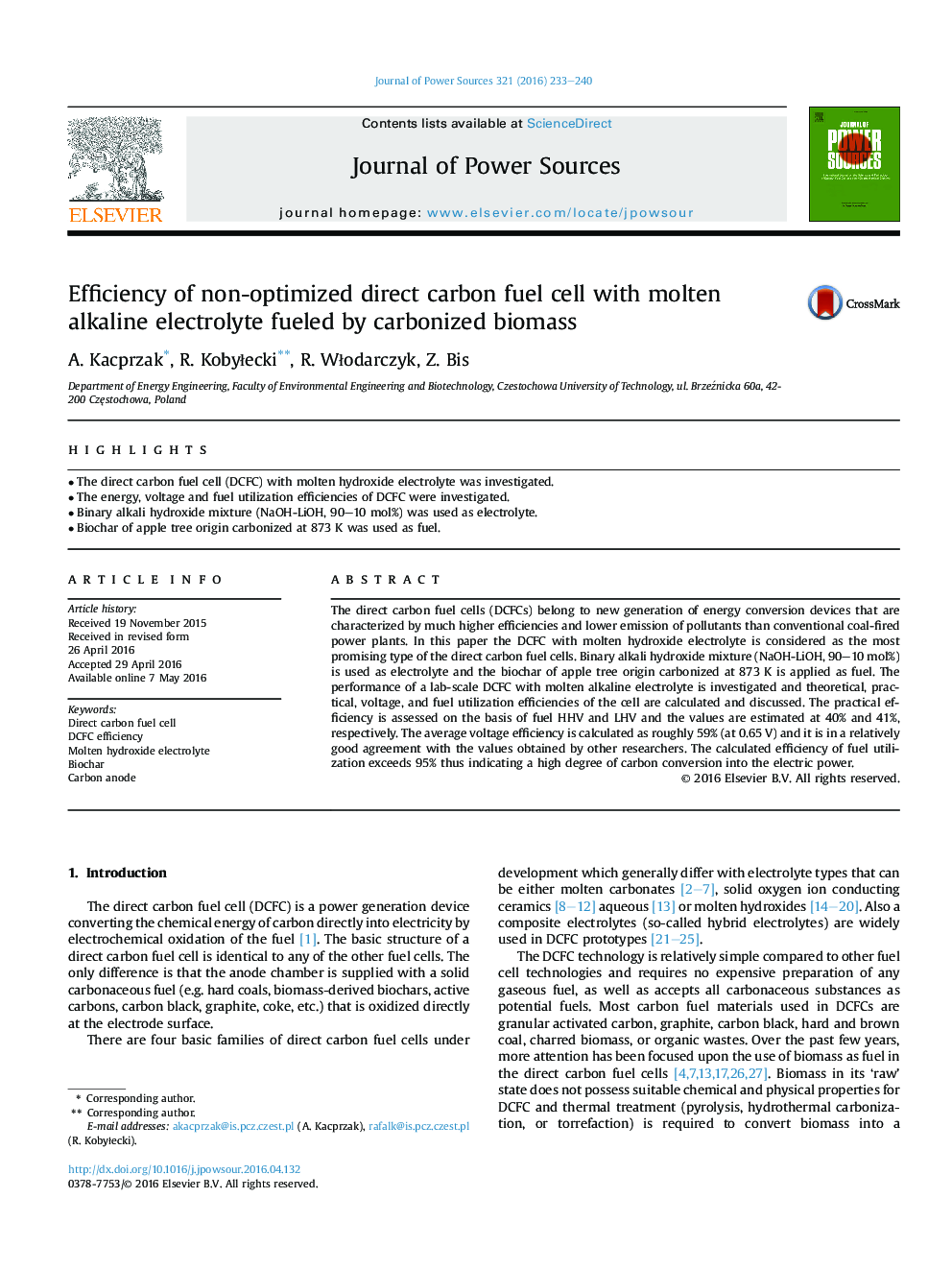| Article ID | Journal | Published Year | Pages | File Type |
|---|---|---|---|---|
| 1291803 | Journal of Power Sources | 2016 | 8 Pages |
•The direct carbon fuel cell (DCFC) with molten hydroxide electrolyte was investigated.•The energy, voltage and fuel utilization efficiencies of DCFC were investigated.•Binary alkali hydroxide mixture (NaOH-LiOH, 90–10 mol%) was used as electrolyte.•Biochar of apple tree origin carbonized at 873 K was used as fuel.
The direct carbon fuel cells (DCFCs) belong to new generation of energy conversion devices that are characterized by much higher efficiencies and lower emission of pollutants than conventional coal-fired power plants. In this paper the DCFC with molten hydroxide electrolyte is considered as the most promising type of the direct carbon fuel cells. Binary alkali hydroxide mixture (NaOH-LiOH, 90–10 mol%) is used as electrolyte and the biochar of apple tree origin carbonized at 873 K is applied as fuel. The performance of a lab-scale DCFC with molten alkaline electrolyte is investigated and theoretical, practical, voltage, and fuel utilization efficiencies of the cell are calculated and discussed. The practical efficiency is assessed on the basis of fuel HHV and LHV and the values are estimated at 40% and 41%, respectively. The average voltage efficiency is calculated as roughly 59% (at 0.65 V) and it is in a relatively good agreement with the values obtained by other researchers. The calculated efficiency of fuel utilization exceeds 95% thus indicating a high degree of carbon conversion into the electric power.
